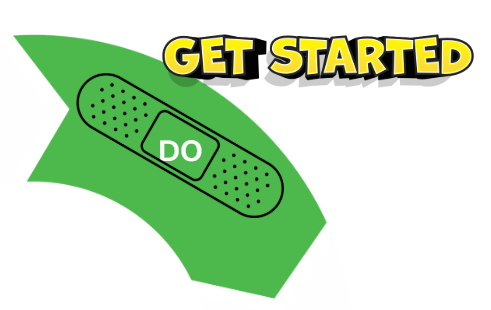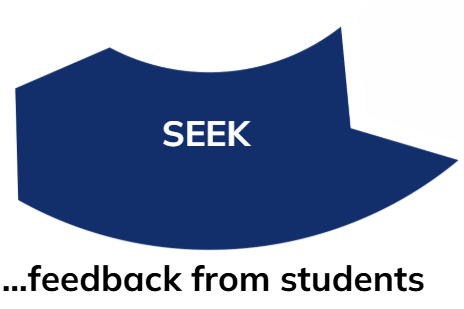The Power of Prototyping
- learning906
- Apr 10
- 5 min read
The NEW THING: Copied, canva-ed, printed, laminated, distributed to 30 students. Done! I have implemented the new strategy.
We hope you are laughing at the simplicity of this thinking. You may well be guffawing. (Cambridge dictionary: to laugh loudly, especially at something stupid that someone has said or done) You might even be tittering. (Cambridge dictionary: a nervous, awkward, self-conscious laugh, when you know you should not be laughing) You may even have given a wry smile and a sigh as you imagine a world where it truly was that simple!
We titter because we have done it and we guffaw because we now know that it did not always work, i.e., positively impact student learning. Our own practice research was that 8.5 times out of 10, we needed to adapt and adjust the NEW THING to our context and preference for IT to work.
Teachers want their students to learn and we are in a space in education where evidence-informed strategies are, for all the right reasons, more prolific than ever. We also have access at our fingertips to ready made resources. NEW THINGS are everywhere.
In many instances, this NEW THING makes sense, has evidence behind it and your gut says it will positively impact student learning. Then the questions can creep in… How will I do THIS NEW THING with the realities of my daily work. I have 29 students in a class, this degree of diversity, this many…, and this…, and…. So where do I start?
Let’s visit the world outside of education for a moment.
In reality, the NEW THING will most likely achieve its intended purpose, student learning, through a process of prototyping.
What is prototyping?
Firstly, what does this number make you think about?

Have you ever heard of Dyson? Initially synonymous with vacuum cleaners, then bladeless fans, hand dryer and hairdryers, James Dyson is also synonymous with the number 5127. 5127 is the number of prototypes Dyson developed before creating the final bagless vacuum cleaner.
The purpose of each prototype was to test the flow, interaction, content, and general feasibility and usability of the product before building and designing a fully-functioning product.
And how did he test the prototype 5127 times? By watching users work with it.

Another way to think about the prototyping process is "Building the plane while flying it"; a metaphor for developing a project or strategy on the fly, adapting and evolving as you progress rather than having a fully planned approach beforehand. It has connotations of agility and flexibility. You may even have seen this clip.
So, what are the implications for us in the world of education?
In reality, the NEW THING will most likely achieve its intended purpose, student learning, through a process of prototyping BECAUSE it is more closely aligned with your context and the students you work with.

Below is a high level overview of core processes in prototyping. As you read through the scenario, consider which of these core processes make the most sense to you.

The scenario: Let’s say you were going to implement the learning strategy of peer feedback using the TAG strategy.
For a quick watch about TAG you might like to watch this 60 second video from Edutopia.

CORE PROCESS: Get Started
Rip the band-aid off. Whilst it is tempting to add the ‘shiny-glossy’ touches to a prototype, in reality you want to spend your time seeking feedback from the users and adapting and adjusting. Label it Draft 1 and get on with it!
Run moderated tests (and keep testing). This is when you test the prototype directly with SOME students so you can engage in real-time conversations and data gathering.
Who might be the best individual/s or small group to test the prototype with? In this scenario, the teacher chooses 4 students who are already accurately using the success criteria to self-assess their work.

CORE PROCESS: SUPPORT
Consider more than the actual recording page.
What else might you need to have in place to support the implementation and scaling?
For example, to give peer feedback using the TAG strategy you might:
make clear to the students their role as ‘testers’ of this new strategy.
show the group of 4 students a quick video (like the 60 second video from Edutopia)
have a first draft TAG recording page ready (see below)
take them through the process of using a work sample, success criteria (which they are already very familiar with) and the TAG recording page

Draft 1 of the TAG recording page

CORE PROCESS: SEEK FEEDBACK
Whilst you are testing the TAG recording page ask yourself some questions (or reflect on them after) as you are observing students using the prototype in real-time and ask them some questions as well.
Question | You are testing the TAG recording page. |
Does the prototype do what it’s supposed to? |
|
When they explore the product, do they become confused at any point? |
|
Does anything distract them or get in their way? Are there any features they completely ignore? |
|
Can users find what they’re looking for? What, if anything, would make your users want to use this product frequently? |
|

CORE PROCESS: LEARN
Reflect on your own practice.
What was it about your instructions, questions, scaffolds and sequence that supported students to use the TAG recording page?
What might make your practice even more effective?
5. CORE PROCESS: MODIFY AND REFINE
What might you start, stop, keep and/or change as a result of this first prototype?

The student feedback was that they:
would prefer the prompts on the feedback recording page and not on a poster/anchor chart.
didn't want to have to write down their actions, but rather just get on with them and write them down if they needed to remember them.
noted that the recording page was missing a place to write their name and who the feedback was from.
The teacher also asked them to suggest the prompts they thought would be most useful for the recording page and left the anchor chart up for additional reference.

Now, get on with it! This time you add four more students to the testing.
What makes sense about this approach to implementing something NEW in your classes?
What feels correct?
We know that teachers are doing this prototyping in various ways, some without having a language to describe it.
What’s our evidence?
Since we first introduced Heat Maps as a way for students to self-assess and monitor their progress, we have continued to partner with schools and teachers as they innovate and learn from implementation of Heat Maps. To find our more, check out Micro Move #4 Heat Maps and Micro Move # 12 Heat Maps - The Sequel.
We also get to talk with teachers in schools, see their prototypes and hear their stories. Look out for these people as we will feature them in future posts!

So, note to self:
Don’t print 30 copies.
Don’t turn on the laminator.
Don’t throw the baby out with the bathwater.
Give yourself permission to be the next James Dyson (with a smaller number of prototypes)
Start labelling things Draft 1, Draft 2…
Start building that plane, with one student, one micro-lesson at a time
Have a little chuckle
What is your note to self?






Comments